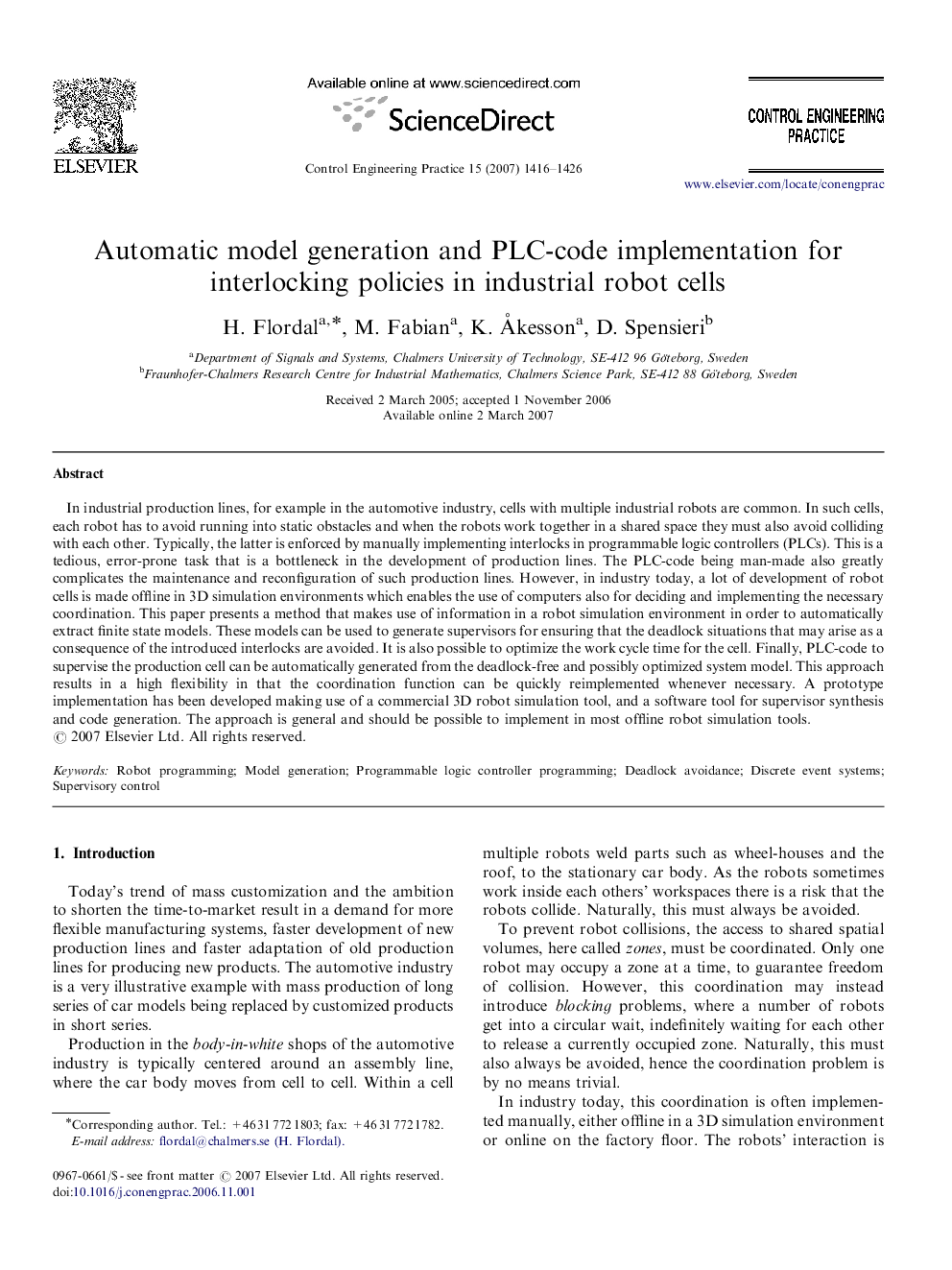| Article ID | Journal | Published Year | Pages | File Type |
|---|---|---|---|---|
| 700640 | Control Engineering Practice | 2007 | 11 Pages |
In industrial production lines, for example in the automotive industry, cells with multiple industrial robots are common. In such cells, each robot has to avoid running into static obstacles and when the robots work together in a shared space they must also avoid colliding with each other. Typically, the latter is enforced by manually implementing interlocks in programmable logic controllers (PLCs). This is a tedious, error-prone task that is a bottleneck in the development of production lines. The PLC-code being man-made also greatly complicates the maintenance and reconfiguration of such production lines. However, in industry today, a lot of development of robot cells is made offline in 3D simulation environments which enables the use of computers also for deciding and implementing the necessary coordination. This paper presents a method that makes use of information in a robot simulation environment in order to automatically extract finite state models. These models can be used to generate supervisors for ensuring that the deadlock situations that may arise as a consequence of the introduced interlocks are avoided. It is also possible to optimize the work cycle time for the cell. Finally, PLC-code to supervise the production cell can be automatically generated from the deadlock-free and possibly optimized system model. This approach results in a high flexibility in that the coordination function can be quickly reimplemented whenever necessary. A prototype implementation has been developed making use of a commercial 3D robot simulation tool, and a software tool for supervisor synthesis and code generation. The approach is general and should be possible to implement in most offline robot simulation tools.
